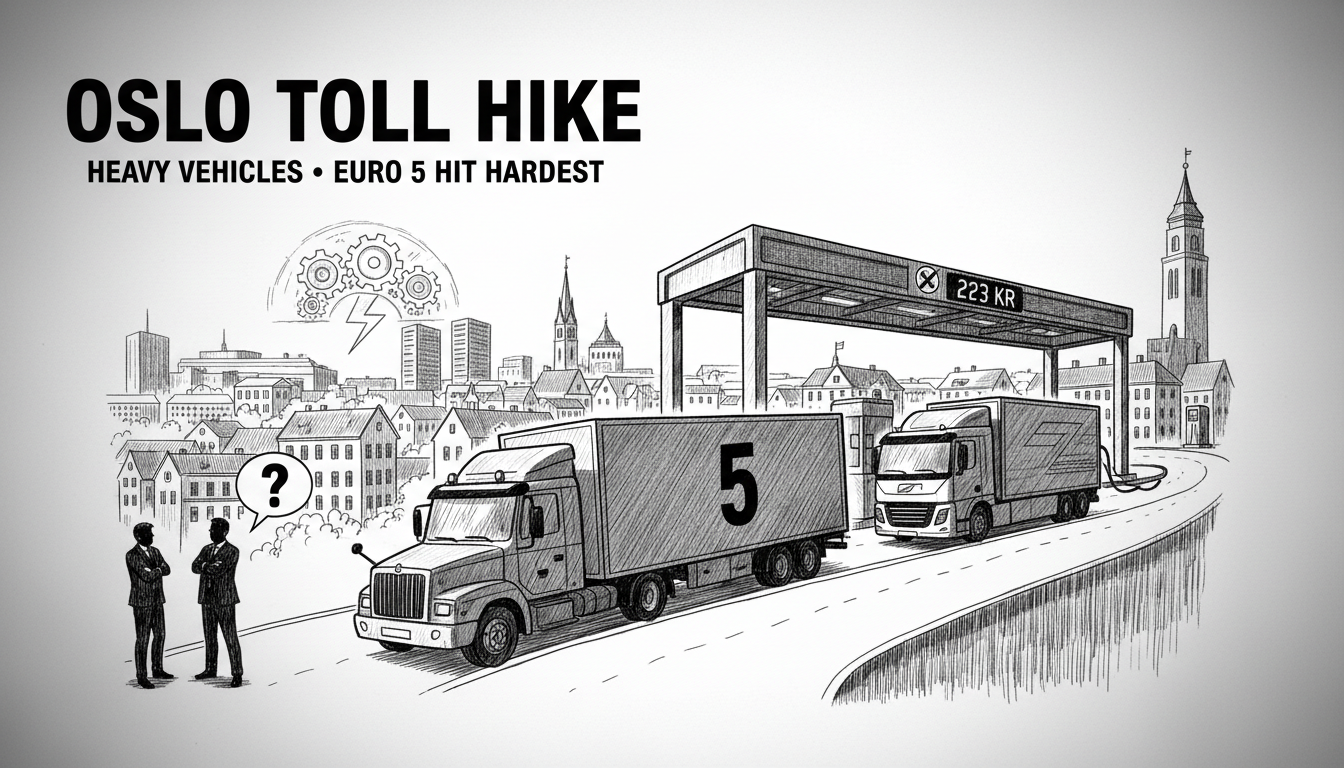Oslo has introduced substantial toll increases for vehicles entering the city, with older heavy trucks facing the most dramatic cost hikes. The new pricing structure took effect this week following approval by the Norwegian Public Roads Administration. Heavy vehicles manufactured before Euro 6 emissions standards now pay 223 kroner during rush hours at Oslo's toll stations. This represents the steepest increase among all vehicle categories affected by the new pricing scheme.
The toll system covers 83 stations distributed across three concentric rings around Oslo. The outermost ring marks the boundary with Akershus county. Motorists pay in both directions within the two inner rings, while the outer ring only charges vehicles entering Oslo from Akershus. A timing rule applies to the inner rings, limiting charges to one passage per hour regardless of direction.
Johan Kristian Bjerke, regional director of Norway's Truck Owners Federation, expressed serious concerns about the economic impact. He stated that the increases impose substantial costs on transportation businesses without accelerating environmental transition. The timing presents particular challenges for an industry already working toward electrification. Bjerke noted that infrastructure development and vehicle replacement require more time than the implementation schedule allows.
These toll adjustments originate from the renegotiated Oslopakke 3 agreement between Oslo municipality and Akershus county. The agreement directs approximately 96 percent of collected funds toward public transportation, cycling infrastructure, and pedestrian projects. The remaining four percent supports road maintenance and improvements. Fornebubanen, a major new subway line, represents the largest single investment funded through this mechanism.
The policy reflects Oslo's continuing commitment to reducing urban traffic congestion and vehicle emissions. City planners aim to accelerate the transition to electric heavy transport while funding substantial public transit expansions. The toll structure specifically incentivizes newer, cleaner vehicles through differentiated pricing. Electric and gas-powered trucks face lower increases than their diesel counterparts.
Norwegian transportation policy increasingly links infrastructure funding to environmental objectives. The current administration has made electrification of heavy transport a priority across multiple sectors. This latest toll adjustment demonstrates how urban planning instruments serve both funding and regulatory purposes. The approach balances immediate revenue needs with long-term sustainability goals.
Industry representatives acknowledge the environmental rationale but question the implementation pace. They argue that existing vehicle replacement cycles and charging infrastructure cannot accommodate such rapid cost increases. The transition requires coordinated investment in both vehicles and supporting systems. Many operators feel caught between policy ambitions and practical constraints.
Oslo's three-ring toll system has evolved substantially since initial implementation. The current changes continue this development while prioritizing public transportation funding. The city maintains its position as a leader in urban environmental policy through such measures. The toll increases represent another step in Oslo's comprehensive approach to sustainable urban mobility.

